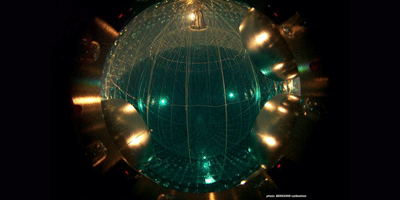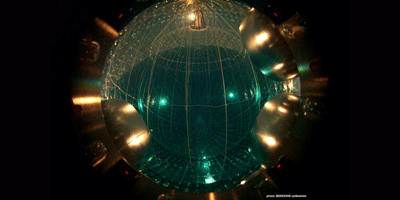Rare Fusion Reactions Probed with Solar Neutrinos
Neutrinos coming from the sun offer a window into the inner workings of our star. Scientists have detected the neutrino signature of several different solar nuclear reactions, but other steps in the fusion process have remained elusive. Now, the Borexino Collaboration, which runs a neutrino detector that lies a kilometer below the Gran Sasso mountain in Italy, reports in Physical Review Letters that they have obtained the first evidence of a relatively rare fusion reaction in the sun, while also placing strong limits on another.
Deep in their cores, most stars get their energy by fusing hydrogen into helium. This has been verified by Earth-bound measurements of solar neutrinos, which are one of the by-products of nuclear fusion. For our sun, the dominant pathway is the proton-proton, or pp, reaction chain.
Solar models predict that other reaction pathways occur in the sun. The proton-electron-proton, or pep, reaction produces deuterium that can feed into the pp chain, but only out of deuterium atoms are made through pep. The signature for the pep reaction is a neutrino with a distinct energy of mega-electron-volts, and the Borexino experiment was designed to detect neutrinos in this energy range. By carefully removing background signals from cosmic rays and other sources, such as gamma rays from the rocks surrounding the detector and from detector materials, the Borexino Collaboration (Bellini et al.) claims to have seen pep neutrinos per day per tons of detector. The team also looked for neutrinos from a separate reaction network, the carbon-nitrogen-oxygen, or CNO, cycle, but was only able to set a stringent upper limit on the flux of these neutrinos. As more data are collected, the researchers may be able to discriminate between competing models of the sun as well as disentangle the different ways neutrino flavors can mix. – Michael Schirber





